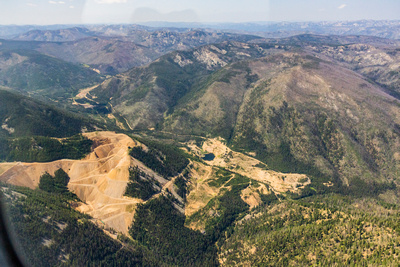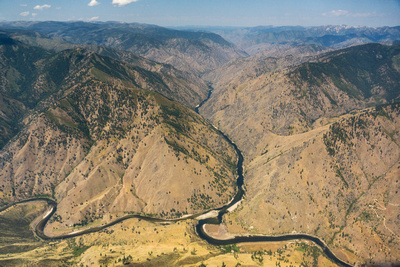
Captain’s Log Starship 1XE, Day 6 in the month August, Earth Calendar year 2020.

The difference between virtual and real. Sometimes it’s a fine line as far as getting information across and sometimes it is just simply black and white. Sometimes you are engaged in creating a virtual educational tour of a proposed mine on the edge of some of the first and most remote and beautiful wilderness areas (The River of No Return) in Idaho and sometimes it is the real deal, landing in the canyons where the back-country airstrips are located. Most recently, as we have been doing since Covid-19 hit, we were off to fly our virtual missions, with GoPros, microphones, video equipment and latitudes and longitudes of waypoints in the landscapes that our partners want to highlight as critical to their stakeholders, politicians and press alike. Our strategy and plan of action in this virtual era requires meticulous work to figure out exact locations and routes with our partners, then film, edit and create voice-overs to educate people on the concerns and challenges facing the landscape. A bit different than showing up for a gaggle of diverse passengers making sure you are cleanly shaved and in your best EcoFlight attire.
In this case the virtual tour we were creating was for a proposed re-mining of old mining operations and is called the Stibnite Mine. This mine is nestled in central Idaho, in the headwaters of the Salmon River, one of the longest remaining undammed rivers in the USA. The Stibnite Mine proposal is for a cyanide leach gold mine, which will include three big open pits and will produce 450 million tons of mine waste, which will fill three valleys and seriously affect the Salmon River and other watersheds.

These tours can be challenging as you are constantly gauging how to shoot the landmarks, and assessing terrain and lighting but they are also challenging due to the limited life of GoPro batteries. This necessitates us being creative in choosing airstrips to embark from, so that the GoPros are still filming when we fly over our designated route.

After much back and forth, I decided the only place to land close enough to film the Stibnite Mine was a small backcountry strip called Johnson Creek. We usually pick airstrips that are out of the way, as in this time of COVID, we are camping under the wing and not utilizing hotels. In fact, on one of these recent trips I found myself being jolted awake by a sharp elbow to the ribs administered by Janey. We were sleeping under the wing on a very little used airstrip called Lone Pine in the eastern Sierras. I awoke to a long line of lights that in my just awakened state I thought were coming straight for us. The plane did see us – it was a med evac plane picking up an injured climber coming off Mt Whitney.

But I digress. Johnson Creek was going to be a luxury for us as it had camping facilities and a reputation as the premier backcountry strip in Idaho. Getting into and out of the small airstrip tucked up in a tight canyon was the only obstacle. The usual backcountry pilot techniques would be required but it is always challenging going into a strip for the first time. First you have to find the strip, which was not so easy flying low and slow up the narrow canyons, then overfly the field looking for all kinds of wildlife, then try to stay clear of the trees on the downwind and not get too high, or for that matter too low, make the abbreviated base turn to final, check your airspeed, slip it down and plant it on the grass. All was going famously until on final, a line of sprinklers appeared in the middle of the grass runway so we chose right and that proved to be one of my better decisions in quite a while, as a taildragger aircraft that was not using its radio departed on the other side. I guess I can sum it all up by saying Janey was not thrilled, but it was a spectacular setting, and allowed us to complete the filming for yet another virtual aerial educational tour in a timely manner. The virtual tour will be utilized by a coalition of partners, including the Nez Perce, to bring attention to Midas’ proposal which includes the outrageous idea of diverting the headwaters of the Salmon River into a tunnel for a mile to divert it from the mine’s proposed open pit.
Bruce